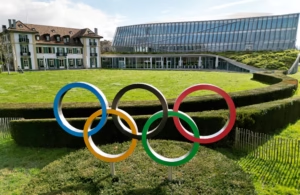The 2025 domestic season in Indian women’s 400m brought depth, intrigue, and a renewed sense of urgency. It produced promising times, key comebacks, and the emergence of new threats but it also underlined one stubborn truth, the 50.79s national record set by Hima Das in 2018 remains untouched.
With the 2026 season looming one that feeds directly into qualification for major global events the question is sharper than ever: can Indian quarter-milers finally break the sub-51 barrier again?
Aishwarya Mishra Leads the Pack With 51.12s
The standout performance of 2025 came from Aishwarya Mishra, who clocked 51.12s in February while winning the National Games her personal best and the fastest Indian time of the year. The run broke her own Games record by more than a second and confirmed her as India’s in-form domestic champion.
Read Articles Without Ads On Your IndiaSportsHub App. Download Now And Stay Updated
Her gap to Hima Das’s national record is just 0.33 seconds small enough to tempt belief, but large enough to demand precision, discipline, and international exposure. Mishra credits her calmer mindset, incorporating drawing and travel, for her improved focus. Yet, unlike several other top sprinters, she is not training under new Jamaican coach Jerry Holness, raising questions about whether training outside India’s centralized system may limit her ability to extract the final tenths required to break the record.

While Mishra topped 2025, the strongest evidence of sub-51 potential still belongs to Kiran Pahal, who clocked 50.92s in 2024 the fastest time by an Indian woman since Hima Das’s NR. That 50.92s puts her just 0.13s short of the record, making her the most realistic challenger heading into 2026.
Her 2025 season opener of 54.93s raised eyebrows, but the performance reflects a deliberate de-load year after the Paris 2024 Olympics a strategic rebuilding phase under Holness. The ranking window for major 2026 competitions runs till September, meaning Pahal is expected to peak late. If she transitions successfully from foundational strength work to speed endurance by mid-2026, she could return to the sub-51 zone.
Rupal Chaudhary: A Patient, Structured Comeback
Rupal Chaudhary, one of the brightest prospects in Indian sprinting, continued her comeback from a knee injury that wiped out her 2023 season. She clocked 52.41s this year still far from her 51.85s PB from 2022, but significant considering her recovery phase.
Under Holness’s guidance, Rupal’s return has been deliberately conservative. The goal is not immediate fast times, but structural rehabilitation and long-term speed endurance rebuilding. The signs suggest she could return to the low-52s or high-51s in 2026, potentially emerging as a dark horse for the sub-51 race if her progression accelerates.
Read Articles Without Ads On Your IndiaSportsHub App. Download Now And Stay Updated
Vithya Ramraj, the national record holder in the 400m hurdles, clocked 52.81s this season in the flat event. Her PB of 52.25s shows ability, but her dual specialisation in hurdles and 400m dilutes her capacity to push towards sub-51 territory.
The technical demands of hurdling rhythm, stride pattern, clearance compete directly with the requirements of flat sprinting, making a single-minded NR push impractical. Vithya remains a critical relay asset, but is unlikely to feature in the national-record conversation.
Neeru Pathak and the Depth Below 53 Seconds
Neeru Pathak returned strongly to win the National Open Championships with a PB of 52.85s, reinforcing India’s sub-53 depth. Her youth offers room for rapid improvement, but she remains over two seconds off the national record and is more likely to influence relay strength than individual NR ambitions.
One of the most alarming developments of 2025 was the provisional suspension of Sneha Kolleri, who tested positive for the anabolic steroid Stanozolol. The violation occurred inside the National Centre of Excellence in Thiruvananthapuram, where she was training under the foreign coach Holness.
This is no mere individual offence it exposes a systemic vulnerability inside India’s centralized high-performance structure. When doping occurs inside what should be the safest, most tightly monitored environment, the credibility of the entire program comes under question. Historically, the 400m has already been stained by major suspensions. The Kolleri case risks destabilizing India’s sprint revival unless AFI and SAI conduct immediate structural reforms.
Why the Sub-51 Barrier Still Stands
Running sub-51 demands more than talent. It requires:
- Near-elite 100m speed (~11.3–11.5 seconds)
- 200m efficiency (~23.0 seconds)
- A 300m split around 36.5–37.0 seconds
- Minimal speed drop in the final 100m
Only athletes with a balanced blend of maximum velocity, speed endurance, and lactate tolerance can cross this threshold. In 2025, only Pahal has demonstrated this capacity. Mishra, for all her consistency, must still break through a physiological plateau.
Outlook for 2026: A Record Within Reach?
Based on performance data:
- Kiran Pahal: Strong contender. A clean, well-planned season could produce a time under 50.79s.
- Aishwarya Mishra: Secondary threat. Needs targeted speed endurance gains and international exposure.
- Rupal Chaudhary: Outside chance. Injury recovery will dictate her ceiling.
If India is to finally bring down the Hima Das-era national record, 2026 will be the year and Pahal remains the athlete most likely to do it.
How useful was this post?
Click on a star to rate it!
Average rating 0 / 5. Vote count: 0
No votes so far! Be the first to rate this post.






